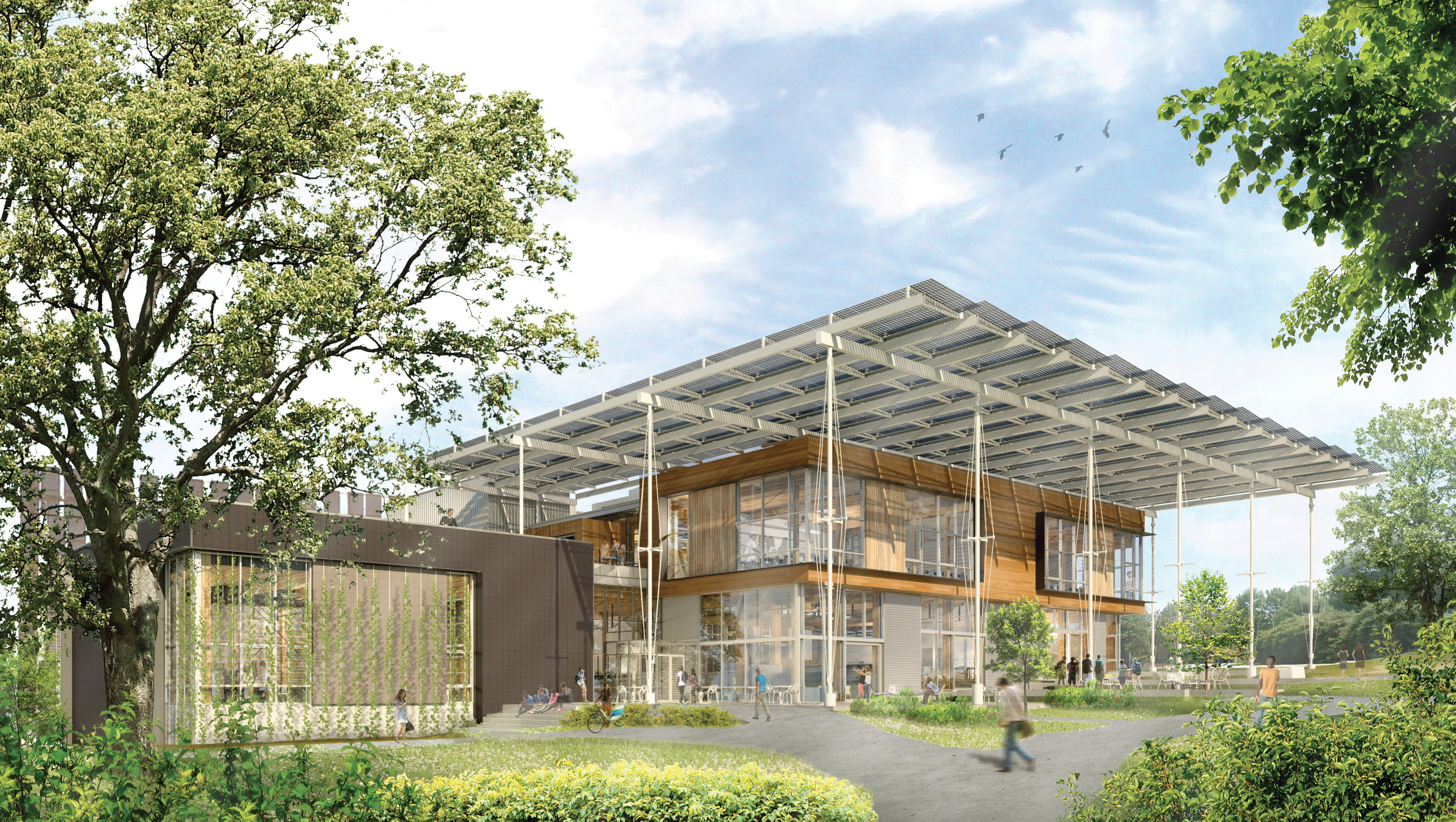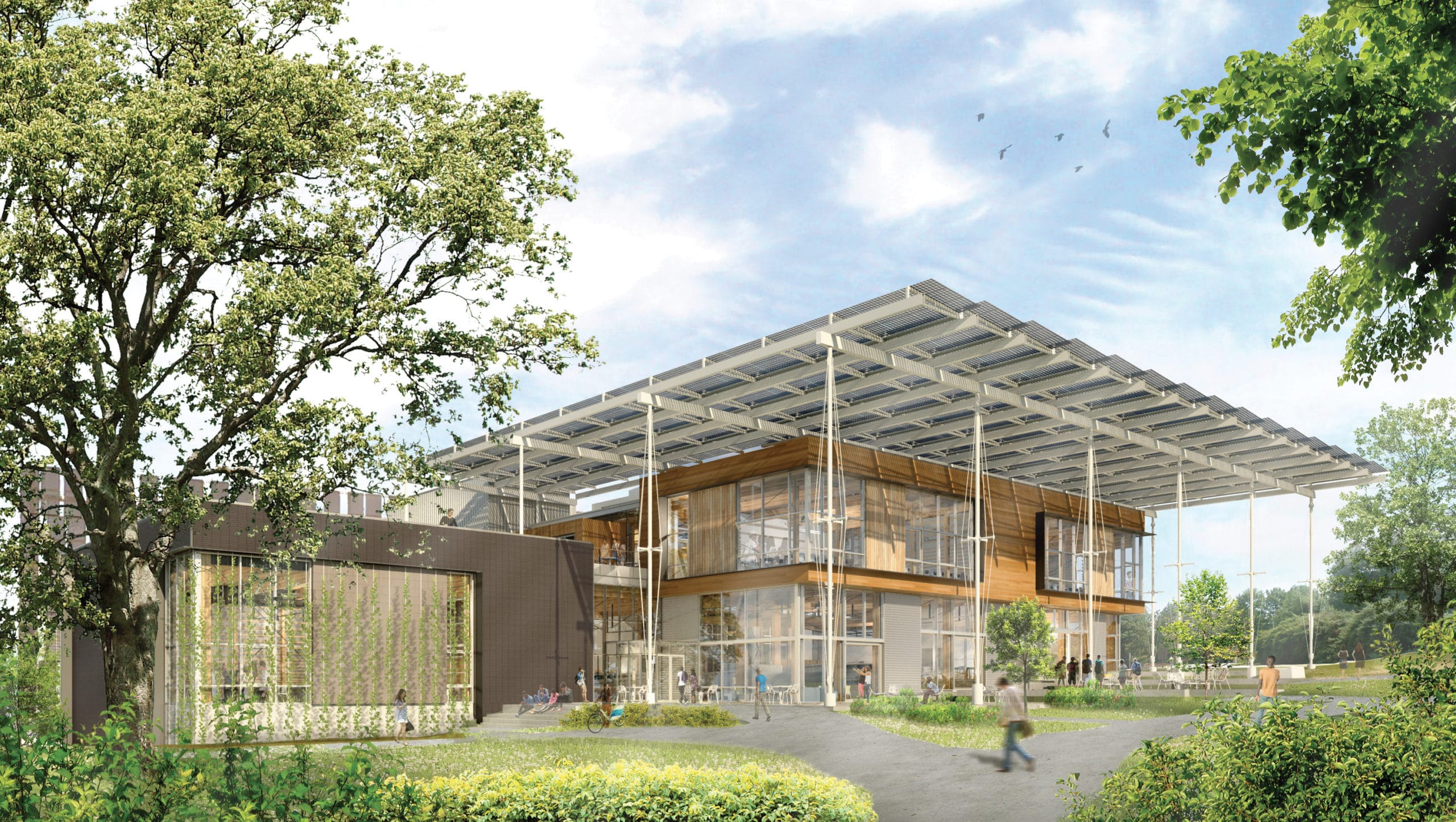
The Living Building at Georgia Tech is set to achieve net positive energy. [Photo: Courtesy of The Miller Hull Partnership/Lord Aeck Sargent]
When the team working on the Living Building at the Georgia Institute of Technology came across a design problem, they often asked themselves one question: What would nature do? “If this building is really going to be a regenerative building, a living building, it needs to act like nature,” says Dan Nemec, the assistant director of capital planning and space management at Georgia Tech. “So we kept coming back to that question and striving to find the most naturalistic answer.”
When it’s completed in 2019, the Living Building at Georgia Tech will be a veritable temple to green design, the most environmentally advanced educational building in the Southeast. Designed by The Miller Hull Partnership and Lord Aeck Sargent, the project was funded with a $30 million grant from the Kendeda Fund, an Atlanta-based nonprofit. That’s the largest single grant Kendeda has ever made, and one of the largest capital gifts Georgia Tech has ever received. The money came with one stipulation: Living Building Challenge certification.

[Photo: Courtesy of The Miller Hull Partnership/Lord Aeck Sargent]
Among the myriad things the building has to do to nab that designation is achieve net positive energy, meaning it has to harvest at least 5% more energy than it consumes. In hot and humid Georgia, getting to net zero energy is tricky in any building. Achieving it in a building this large—seven classrooms, study areas, offices, an auditorium, and a “maker space” for students’ creative projects—that will be used 18 hours a day, 12 months a year—is really tricky. And dealing with unpredictable energy needs that depend on class schedules and the whims of college kids who may or may not want to charge their laptop on any given day?
“That was the biggest wild card,” says Brian Court, a partner at Miller Hull and the building’s project lead. And Georgia Tech has promised to pack this building to capacity—they want it to be visited by tourists, used by students, loved by the community. That’s the only way it will inspire green design in the region and other warm climates for years to come.
But how to generate enough energy to account for all that use? Theoretically, the team could install solar panels to cover the load, but it’s almost always cheaper to find a way to reduce energy consumption than to generate that energy using solar panels. The team used several techniques for passive energy saving: triple pane windows, an exposed thermal mass of concrete flooring to capture the sun’s energy and gradually release it to regulate temperature, and trees and a wide overhang on the roof to provide shade. After making those energy-saving maneuvers—and running exhaustive models to calculate the building’s energy needs—the team decided to install photovoltaic panels on the roof that will generate nearly 300 kilowatts of electricity.

[Photo: Courtesy of The Miller Hull Partnership/Lord Aeck Sargent]
When it came to sourcing materials for the building, Georgia Tech had one advantage: Access to buildings on campus and around the state that were slated for demolition. The team was able to salvage used lumber and slate from an old house on campus, and before the old Georgia archives building was demolished last spring, the team went in to save whatever they could, including finished wood and granite curbing.
Georgia Tech has embraced the Living Building Challenge as a series of teachable moments, engaging students, faculty, and staff in every step of the process. The landscaping team has been doing pilot projects around campus to learn more about how a natural landscape will perform in the environment, the facilities management team is developing a manual to educate the community about a Living Building’s maintenance needs, and the university is funding several research projects that are related to the Living Building Challenge. This fall, students were even invited to a DIY activity on campus to make their own cornhole boards out of reclaimed materials. “At our core, our mission is driven by education,” Nemec says. “And we believe that if we do sustainable buildings on campus, students will see that, come to understand it, and they will take that knowledge back to their communities when they graduate.


